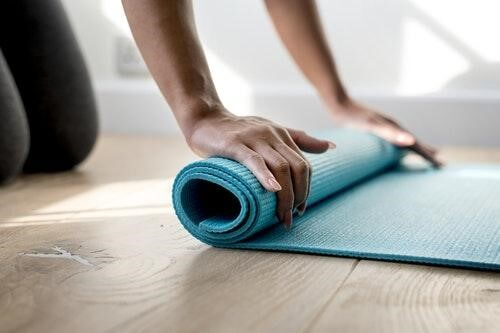
This post was written by an external contributor. Aayushi breaks down mindfulness and how you can use it to stay zen this Spring.
When was the last time you truly experienced silence without a single thought running through your head? Do you remember every single detail of walking from A to B (the sound of birds chirping, the smell of some food from a nearby restaurant, the sensation of the wind blowing through your hair)?
If you can, it means you are being mindful of your surroundings and thoughts.
The term ‘mindfulness’ probably isn’t new to the majority of you, but for those who aren’t too sure about what it is, why it’s helpful, or how you can become more mindful, below is a quick guide to answer your questions.
What is it?

Mindfulness is the process by which you become more aware of the present and have a better understanding of your thoughts, feelings and surroundings. We can all practice mindfulness by using various techniques.
Why is it beneficial?
Life is stressful; though a small amount of stress can be good for us, it is also possible for this stress to take over our lives and affect our mental well-being. This is not only unhealthy in the short run, but can also lead to mental health problems such as anxiety or depression.
There are numerous studies out there that have highlighted the significance of mindfulness and the role it plays in improving mental health/stress in a number of ways:
– Dealing with negative thoughts in a productive manner
– Allowing us to see early signs of anxiety and stress
– Controlling our thoughts so we don’t overthink
– Understanding ourselves better
– Enjoying our lives more fully
According to the National Institute of Health and Clinical Excellence (NICE), mindfulness can also be used to resolve social anxiety and even prevent or treat mild depression.
What can I do to become more mindful?
Breathing exercises

Just sit and focus on how your breath enters and leaves your body. Don’t try to control your breathing, just feel the way it naturally comes and goes. Be present in the moment and feel the sensations in your body.
Focus on the food you eat

As weird as this may sound, turn everything off for 20 minutes – including your phone and any other screen. Really focus on every bite of your food; what does it taste like? Is it too hot or too cold? Does it make a crunching sound when you bite? This will make you more mindful of your food and help you get closer to appreciating your present state.
Get a colouring book

Adult colouring books for mindfulness are becoming increasingly popular. Many studies have shown that one of the best ways to control anxiety and get rid of stress is to colour. Not only will you feel like a little kid again, but by doing such activities you are bringing your mind to focus on the present.
Meditation

Saying “Ohmmm” is not the only way for someone to meditate. There are many different techniques out there, many of which can be found on various websites.
There are loads of apps for beginners that can help you get into meditation such as Insight Timer, Calm, or Stop, Breathe & Think. These apps are not only good for beginners but are also useful for advanced meditators, too!
How do I fit this into my schedule?

It’s completely understandable that taking time out of a very hectic schedule can be difficult. Luckily there are so many ways around it; all it requires is using your time more wisely, such as…:
1) On your commute to university, work, the gym, extracurricular classes – wherever you get a couple of minutes of travelling time. Instead of listening to music, scrolling through Instagram, or texting your friends, take five minutes to sit in silence and focus on your breathing.
If you get a bit nervous about what other people might think, just stick your earphones in and pretend to listen to music. Alternatively, you can close your eyes and ‘sleep’ for five minutes but instead be doing one of the mindful techniques mentioned above.
2) If however, you don’t want to do this in front of people, you can do it first thing in the morning after brushing your teeth, or before your breakfast, or right before dinner, or before you fall asleep… It’s actually very easy to find five minutes to be more mindful if you commit.
What you need to remember is that you will most likely not feel like a whole new person overnight. It will be tough in the beginning, and it’s highly likely your mind will wander. But soon you’ll start to feel a lot calmer and see that actually you are able to let thoughts come and go quite easily.
Many people are becoming more self aware, confident and happier as a result of using techniques to become more mindful. Why not make 2018 the year to have a more fulfilled and positive outlook?
Download Debut and connect with us on Facebook, Twitter and LinkedIn for more careers insights.


